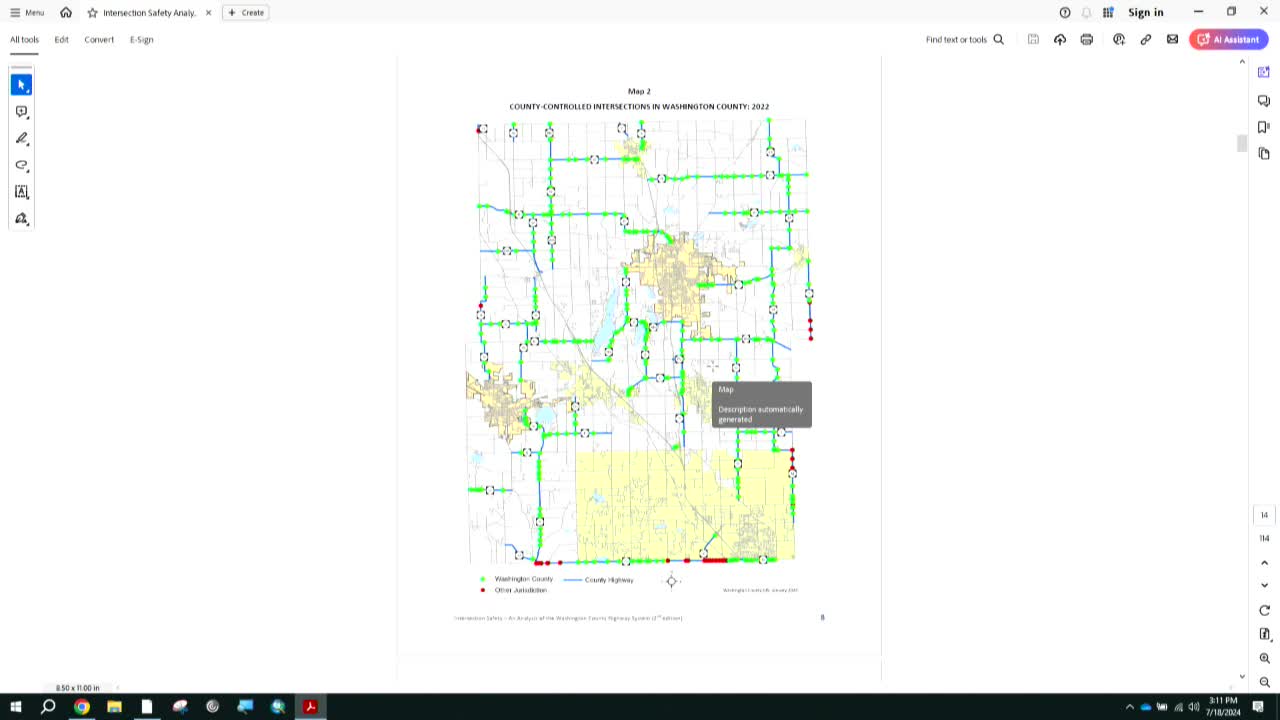Data reveals alarming trends in intersection crash severity
July 15, 2024 | Washington County, Wisconsin

This article was created by AI summarizing key points discussed. AI makes mistakes, so for full details and context, please refer to the video of the full meeting. Please report any errors so we can fix them. Report an error »

In a recent government meeting, officials discussed the analysis of traffic crash data at intersections, emphasizing the importance of understanding both the frequency and severity of incidents. The evaluation process involves examining crash rates adjusted for the average daily vehicle count, as well as the severity of crashes, particularly those resulting in fatalities or major injuries.
The current analysis covers a five-year period from 2018 to 2022, building on previous data from 2013 to 2017. This approach allows officials to identify trends over consistent time blocks while also considering additional data from the year and a half following 2022. The data is sourced from the Wisconsin transportation portal, maintained by the University of Wisconsin-Madison's Traffic Operations and Safety Lab, which compiles crash reports submitted by law enforcement.
Officials highlighted the accessibility of this data to the public through community maps, where users can visualize crash locations and details. The mapping system employs a color-coded scheme to indicate crash severity: red dots signify fatalities, while other colors represent varying levels of injuries or property damage. This visual representation aids municipalities in understanding crash patterns and prioritizing safety measures.
The meeting also underscored the critical role of law enforcement in accurately documenting crash details, as the quality of this information directly impacts the effectiveness of safety plans. Law enforcement agencies are responsible for updating crash reports, ensuring that any changes in circumstances, such as injuries that develop over time, are reflected in the data.
Overall, the discussions highlighted a commitment to improving traffic safety through data-driven analysis and community engagement, with officials encouraging public access to crash information to foster awareness and proactive measures.
The current analysis covers a five-year period from 2018 to 2022, building on previous data from 2013 to 2017. This approach allows officials to identify trends over consistent time blocks while also considering additional data from the year and a half following 2022. The data is sourced from the Wisconsin transportation portal, maintained by the University of Wisconsin-Madison's Traffic Operations and Safety Lab, which compiles crash reports submitted by law enforcement.
Officials highlighted the accessibility of this data to the public through community maps, where users can visualize crash locations and details. The mapping system employs a color-coded scheme to indicate crash severity: red dots signify fatalities, while other colors represent varying levels of injuries or property damage. This visual representation aids municipalities in understanding crash patterns and prioritizing safety measures.
The meeting also underscored the critical role of law enforcement in accurately documenting crash details, as the quality of this information directly impacts the effectiveness of safety plans. Law enforcement agencies are responsible for updating crash reports, ensuring that any changes in circumstances, such as injuries that develop over time, are reflected in the data.
Overall, the discussions highlighted a commitment to improving traffic safety through data-driven analysis and community engagement, with officials encouraging public access to crash information to foster awareness and proactive measures.
View full meeting
This article is based on a recent meeting—watch the full video and explore the complete transcript for deeper insights into the discussion.
View full meeting
